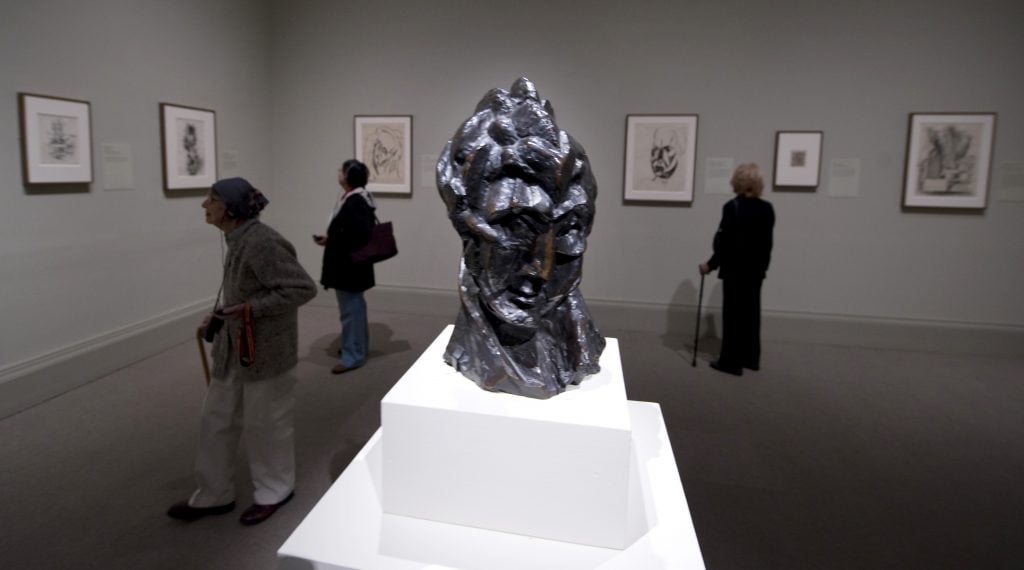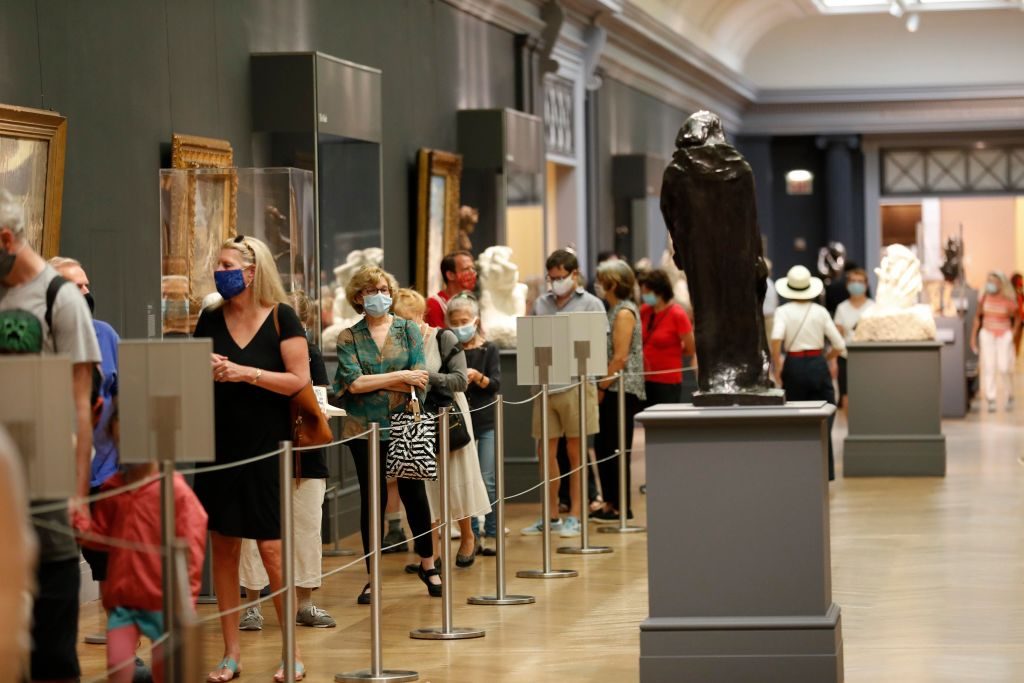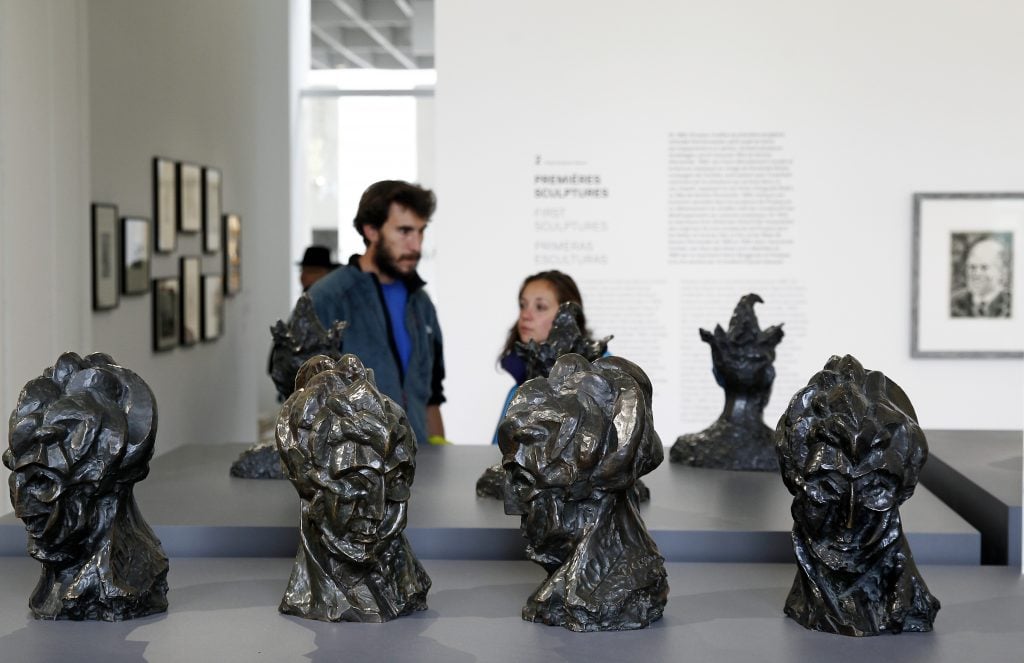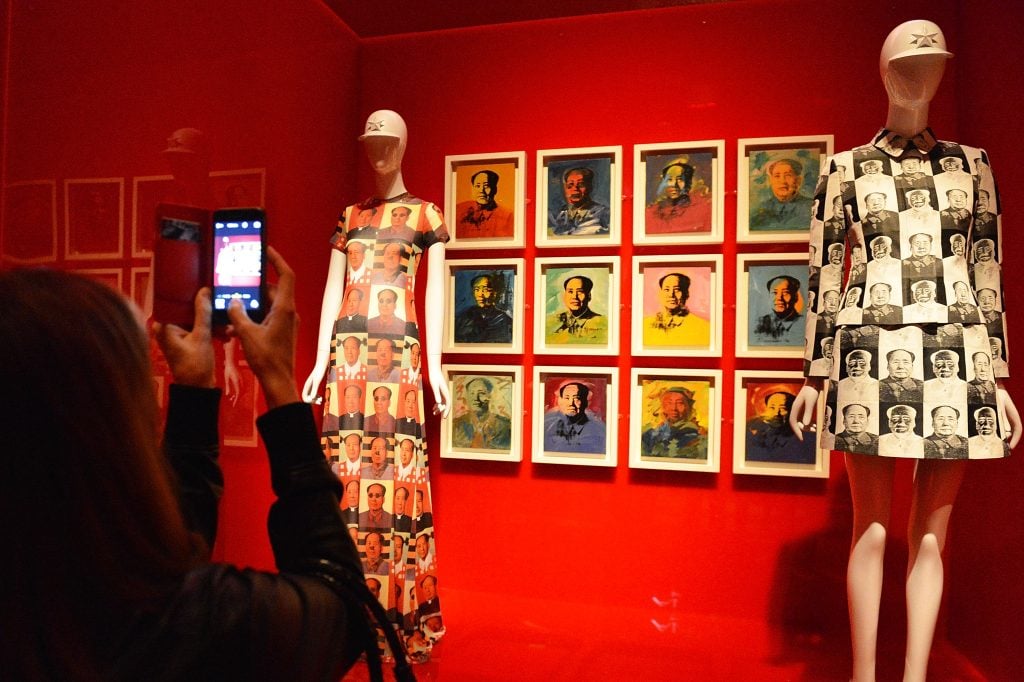The Art Detective
The Met Eyes the Sale of Picasso’s First Cubist Sculpture as It Works to Claw Its Way Out of a $150 Million Revenue Shortfall
We reveal the priciest work that the Met is considering selling.

We reveal the priciest work that the Met is considering selling.

Katya Kazakina

The Art Detective is a weekly column by Katya Kazakina for Artnet News Pro that lifts the curtain on what’s really going on in the art market.
When the Metropolitan Museum of Art announced last week that it would sell around $1 million worth of art to help plug a $150 million pandemic-induced revenue shortfall, it was clear there were even more valuable works waiting in the wings.
The Art Detective has learned that the Met is seriously considering selling a rare 1909 sculpture by Pablo Picasso, Head of a Woman. The work was estimated at more than $30 million by auction specialists earlier this year, according to people familiar with the valuation process. The sale and venue haven’t been announced yet, but it’s likely to be next year at Christie’s, they said.
A spokesperson for the Met stressed that no final decisions have been made.
“As we shared months ago, the museum annually deaccessions work, in some years valuing up to $15 million,” the spokesperson said. “Making a decision on which pieces will be deaccessioned involves a comprehensive process of curatorial and board review, which is currently underway…. This process will be deliberate and transparent, but nothing is yet decided, beyond what was announced last week.”
The country’s largest museum is taking advantage of an unusual two-year window, through April 2022, during which the Association of Art Museum Directors has permitted its members to sell art in order to raise money for collection care, as opposed to only for acquisitions.
The Met announced last week that it would offload 219 prints and photographs at Christie’s, which will offer them in three sales starting next month. They could raise as much as $1.4 million, Christie’s said.
The Met spokesperson said the museum’s approach to this round of deaccessioning would be no different than usual “with the exception that we will follow the same practice other museums are pursuing and will be dedicating some of the funds raised from such sales toward the salaries of staff working on collection care per the crisis caused by the pandemic.”
The museum examined hundreds of pieces across departments to determine what to deaccession, from Chinese works of art to Civil War photographs, according to people familiar with the process. It also sought advice from experts including Tobias Meyer, a private art dealer and former star auctioneer at Sotheby’s.

Visitors in line for the Alice Neel show at the Metropolitan Museum of Art on August 27, 2020. (Photo by Liao Pan/China News Service via Getty Images)
Proceeds from the museum’s traditional annual deaccessioning program are always invested into new acquisitions. This round is likely to generate more than twice as much as its typical program, and will fund collection care, staff salaries, and other uses in line with the AAMD’s temporarily loosened rules.
“The works we use for deaccessioning are duplicates, multiples, copies of the same thing [we have] in better quality,” the museum’s director Max Hollein said in an interview earlier this month. All 219 prints and photographs being sold are duplicates, Christie’s noted last week.
The Picasso would be, too.
The sculpture depicts the Spaniard’s lover Fernande Olivier as an accumulation of angular shapes. It is regarded as Picasso’s first Cubist sculpture, according to the Met’s website. The artist made the original model in the early fall of 1909 at the Paris studio of his sculptor friend Manuel Hugué.
“As in his early Cubist paintings, the shape of her sculpted head is faceted into smaller units,” the Met states on its website. “Intended to be seen in the round, the composition changes form when viewed from different angles. The head’s slight tilt and the neck’s sweeping curves give the impression of movement, as if she is about to look over her shoulder.”

A slew of Picasso’s Head of a Woman sculptures at the Picasso Museum. (Photo by Thierry Chesnot/Getty Images)
The 16-inch-tall bronze has been in the museum’s possession for 36 years, first as a loan and then a bequest by the patron Florene M. Schoenborn, who died in 1995.
Schoenborn and her second husband Samuel A. Marx assembled a major collection of European Modern art with a focus on Cubism. The trove was dispersed to four museums: the Art Institute of Chicago, the Metropolitan Museum of Art, the Museum of Modern Art, and the St. Louis Art Museum.
Head of a Woman is “a landmark work of sculpture of the 20th century,” said one auction executive, who asked not to be named because they were not authorized to speak on the subject. “The opportunity to have one is so unbelievably rare.”
Another cast of the sculpture entered the museum’s collection earlier this year, according to its website, presumably opening the door for it to sell the other one. The duplicate is titled Head of a Woman (Fernande) and came from a trove of Cubist art donated by patron Leonard Lauder. It has a more illustrious exhibition history than the one considered for sale, having appeared in landmark traveling Picasso shows in 1940 and 2006.
It is not known how many bronzes were cast from Picasso’s original model, according to researchers Renzo Leonardi and Derek Pullen. Their 2016 paper suggests that about 20 bronzes were created over three decades. The earliest dates from 1911 and was produced by Picasso’s French dealer Ambroise Vollard, who bought the original model and reproduction rights from the artist. (The second casting was done by German dealer and collector Heinz Berggruen in 1959 and 1960; that edition included nine bronzes.)
Both bronzes at the Met can be traced back to the Vollard casting, according to Leonardi and Pullen. Also linked to Vollard is a bronze from the estate of Belgian collector Rene Gaffe, which sold for $4.9 million at Christie’s in 2001, the highest price for a Fernande head at auction, according to the Artnet Price Database.

Andy Warhol’s Mao paintings were on view in the gallery of “China: Through The Looking Glass” at the Met Costume Institute in 2015. Photo by Slaven Vlasic/Getty Images
If sold, the Picasso would rank among the more valuable items to be deacessioned by a museum in recent years. In 2005, the New York Public Library made headlines when it sold Asher B. Durand’s Kindred Spirits (1849) to Alice Walton for $35 million. Other more recent examples include the Pennsylvania Academy of Fine Art’s sale of Edward Hopper’s East Wind Over Weehawken (1934) for $40.5 million in 2013 and the San Francisco Museum of Modern Art’s offloading of a Mark Rothko canvas for $50.1 million to diversify its collection in 2019.
Among the other works considered for deaccessioning by the Met was an Andy Warhol Mao painting from 1973, according to a person familiar with the discussions, which was the gift of fashion designer Halston in 1983. The Met has surprisingly plentiful holdings of Warhol’s depictions of the Chinese leader.
Also examined was Philip Guston’s abstract painting Painting (1952), gifted to the Met by the late donor Muriel Kallis Newman in 2006. The museum has a strikingly similar, slightly smaller canvas from the same year, Painting, Number 5, which was donated in 1990. That version was included in prestigious exhibitions including the Venice Biennale in 1960.